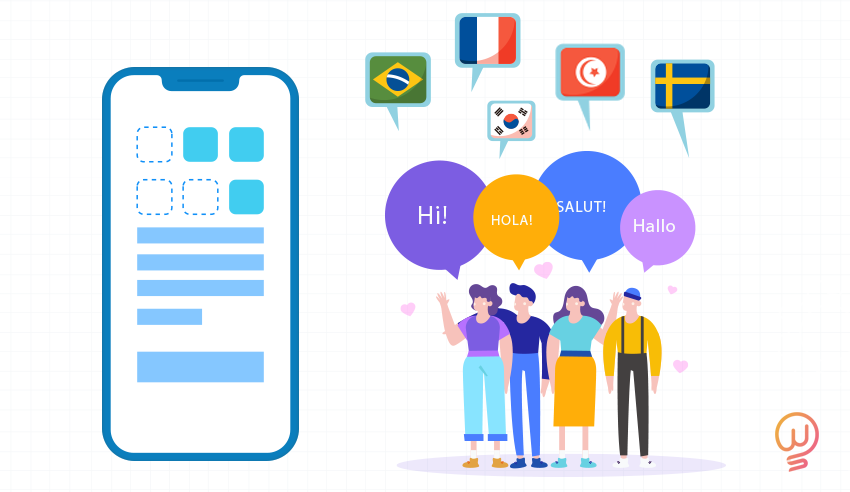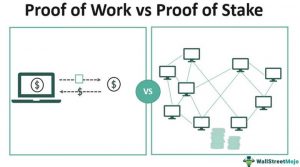
The development of digital technologies and mobility have significantly expanded business opportunities. Entering the global market has become easier and more accessible, for this it is enough to use mobile applications. But there is one condition – you need localization of mobile applications. This is the process of adapting the program to the user’s language, taking into account a number of additional factors. Let’s take a look at how the translation of mobile applications takes place and what is needed for this.
What is mobile app localization
Localization of an iOS or android application is the process of adapting a product to the specifics of the user’s country. This is a set of technical, design and translation tasks. It is not enough to simply translate the application into another language. Adaptation means changing the perception of the product, taking into account the cultural characteristics of the region where the application will be promoted.
The market of another country opens up huge opportunities for business. The more users want to use your product, the higher the capitalization becomes, hence the income. The success of launching into new markets, to a large extent, depends on the quality of localization.
Why is she needed? The international marketing agency Applead conducted a study that showed that the localization of mobile applications increases the conversion of installs by 30%. And this is quite natural. The opening of new markets significantly expands business opportunities.
What is the difference from app translation
Many people really consider these concepts related, but they are fundamentally different. Translation of mobile applications is a process in which the main task is to convey to the user the meaning of the text. The emphasis is on the classic translation of application content from one language to another. Stylistic and lexical features are taken into account.
Localization of mobile applications includes translation as a prerequisite. But in addition to linguistics, an important role is played by the adaptation of the rest of the content, including the shape or color of the buttons, based on the cultural values of the region. It is important to know the mentality, culture of the country, preferences and nuances of the language.
Translation is part of localization. Its goal is to convey meaning without substitution of concepts. When localizing, the target audience is taken into account. It is permissible to introduce slang expressions, slightly change the meanings, if appropriate, and rely on the user’s request and his needs.
Which languages to choose for localization first
It doesn’t matter if you localize android applications or for iOS, the principle is almost the same. It is necessary to select one or more languages, determine the cultural characteristics of the country for which the product will be made, and create, in essence, a new application aimed at a new market. But which languages should you choose first? After all, localization costs money. Let’s figure it out.
First you need to visit the App Store and Google Play, look at the statistics and understand which languages are most often used. By doing this, you will see that the most popular are Chinese, Spanish, English, Hindi, Arabic, Portuguese, Russian, Japanese.
Sensor Tower conducted a study in 2018 and determined that by the end of 2018 most mobile app installs were in India, USA, Brazil, Indonesia and Russia. But keep in mind that Google Play is not available in China.
AllCorrect provided a graph that showed the fastest growing languages in the gaming market segment. It is worth focusing on it, because it is the gaming industry that most often lends itself to localization. In this case, the best languages to start translating mobile apps from are the following:
- Chinese
- English
- Japanese
- Spanish
- Korean
But it is worth considering the indicator of the effectiveness of promoting a product on the world market. Because it is very difficult to enter China due to government measures of the state. Large investments and the organization of serious promotional campaigns will be required. Considering ROI, the recommended list of languages to start localization with looks like this:
- English
- Spanish
- Russian
- French
- Deutsch
Do not forget that it is important to take into account the peculiarities of each country, the “cultural code” and local legislation. Therefore, localization should be done by professionals who know their business and are able to qualitatively adapt an existing product.
How to prepare an application for localization?
If you already have a mobile app, the translation becomes somewhat easier. It is clear where to start. Localization at the development stage is also possible, but you need to think over the detailed structure, taking into account all cultural characteristics. In any case, it is necessary to prepare the application for this process in advance. Here are some tips on how to do this:
- Assess the prospect of launching your product in a new market. Will it be in demand, will they want to download it? This is best understood before you spend a lot of money on localization.
- Study the law carefully. What is allowed in one country is categorically impossible to promote in another.
- Collect detailed information about competitors. It will help you reduce the chance of errors, improve the product based on the experience of others, and find advantages that will set you apart from others.
- Create a detailed portrait of the target audience in the new market. If you have already created a product for your region, it will be easier, because the process of drawing up a portrait is practically the same.
- Adapt your marketing strategy. The effectiveness of different promotion channels may differ depending on the country.
- It is important to prepare a high-quality attractive description. You need to take care of the screenshots in advance and talk about the benefits. Start by preparing these items.
- To increase the visibility of the application in a new country, you need to work with keywords, pay attention to meta tags, and focus on ranking promotion and collecting reviews.
- Choose a competent professional translator. It is enough to make a mistake stylistically or linguistically to create a negative aura around the application. Therefore, the translation of mobile applications must be correct and competent.
- Pay attention to the adaptability of graphics. Remember that the length of phrases or words, if present on the chart, may vary depending on the translation.
These guidelines will prepare your product for adoption and launch into a new market. Localization of mobile applications is a very responsible process. If you want everything to go perfectly, prepare in advance.
Localization of mobile applications: main difficulties
In theory, the idea of localization is very good. New markets open up, more users download the app, make purchases, and the company generates revenue. But in practice, there are many difficulties that prevent high-quality adaptation.
One of the difficulties is attracting a large number of specialists. If the product is massive, as a rule, different specialists are hired. Poorly organized communication between them leads to translation asynchrony. The names of the same terms may differ, inaccuracies appear.
Developers also have certain difficulties in the course of work. In particular, if there are phrases located on the chart, their length may vary depending on the selected language. Problems begin with the layout and placement of components. Sometimes you have to completely redesign the layout to keep the meaning.
Without a coordinator, it is almost impossible to perform a normal translation of mobile applications. The team must clearly understand their tasks, define a common style and choose the direction of development of the application in the new language space. If you solve this problem, the process will go much faster.
How much does app localization cost?
Localization of an iOS or android application is ordered from freelancers or professional companies. Many people recommend contacting translation agencies, but in most cases, you need a team of digital specialists, not translators, who can functionally change the appearance of the application and adapt it to new markets.
The cost of services depends on a number of factors. First of all, the amount of information that needs to be localized. In addition, the following criteria apply:
- subject matter of the application;
- the number of languages into which translation is needed;
- experience of the team: the better it is, the faster and better it will cope with the task;
- time constraints;
- volume of work and others.
Another factor that can significantly affect the cost is the language pair. Finding a translator who adapts the application to English, German and even Chinese is not a problem. But if you want to enter the Indonesian, Arab market, or a more narrowly focused one, for example, the Estonian one, then difficulties will arise. Rather, there is a translator. But the cost of his services will be much higher.
You can, of course, try to save the budget and work with freelancers. But the localization of mobile applications does not tolerate negligence. Keep in mind that a cheap cost may be due to a lack of experience and skills. You may be lucky and get a good specialist. But perhaps you will spend money and not get a quality product.
It is impossible to determine the exact cost of localization, it is influenced by many factors. The translation itself costs about $0.06 per word. If the language pair is complex, the cost can be as high as $0.10 per word. So you can roughly understand how much the translation of mobile applications will cost.
Do not forget to take into account graphical adaptation, functional changes and other criteria. If you want to enter the foreign market, hire professionals. At Picvault we know how to tailor an application.



Average Rating